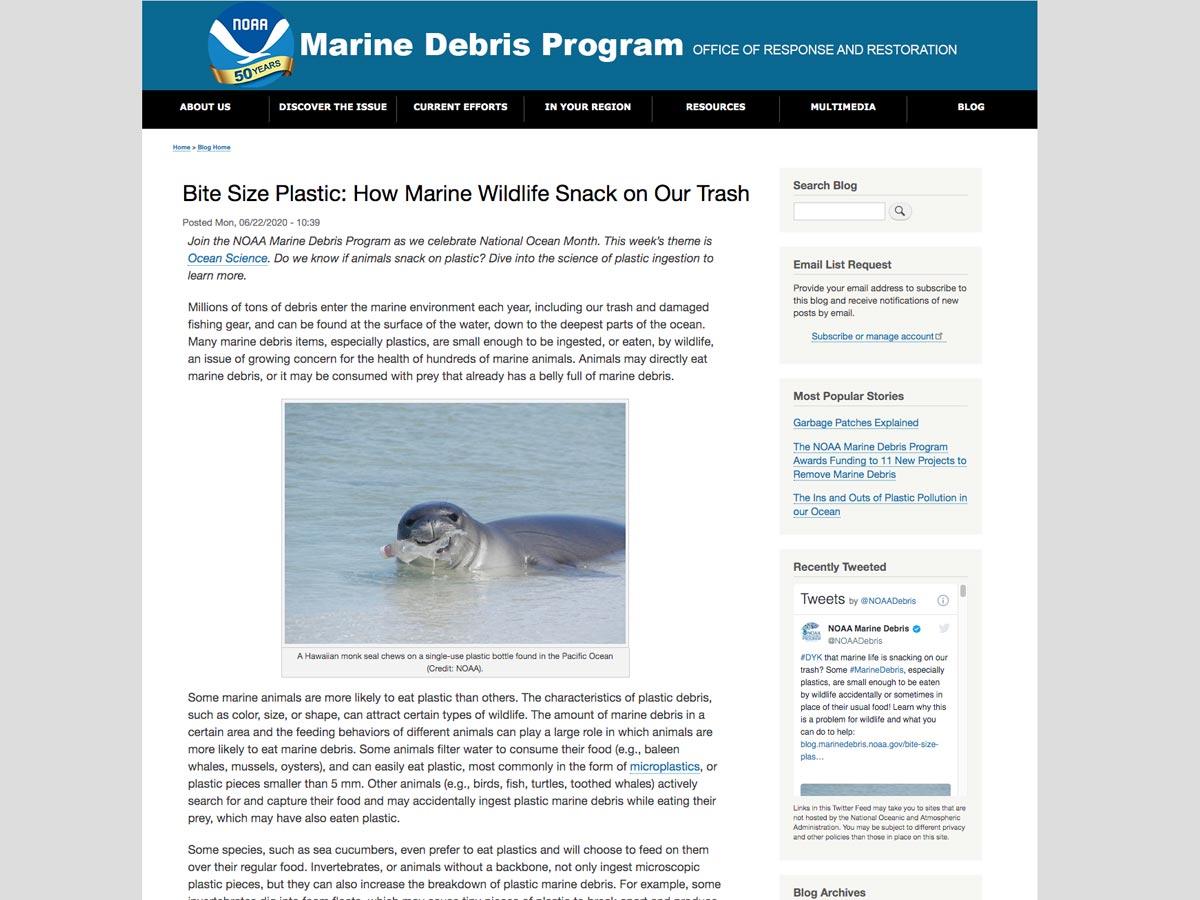Millions of tons of debris enter the marine environment each year, including our trash and damaged fishing gear, and can be found at the surface of the water, down to the deepest parts of the ocean. Many marine debris items, especially plastics, are small enough to be ingested, or eaten, by wildlife, an issue of growing concern for the health of hundreds of marine animals. Animals may directly eat marine debris, or it may be consumed with prey that already has a belly full of marine debris.
A seal sits on the beach with a plastic water bottle in its mouth.A Hawaiian monk seal chews on a single-use plastic bottle found in the Pacific Ocean (Credit: NOAA).
Some marine animals are more likely to eat plastic than others. The characteristics of plastic debris, such as color, size, or shape, can attract certain types of wildlife. The amount of marine debris in a certain area and the feeding behaviors of different animals can play a large role in which animals are more likely to eat marine debris. Some animals filter water to consume their food (e.g., baleen whales, mussels, oysters), and can easily eat plastic, most commonly in the form of microplastics, or plastic pieces smaller than 5 mm. Other animals (e.g., birds, fish, turtles, toothed whales) actively search for and capture their food and may accidentally ingest plastic marine debris while eating their prey, which may have also eaten plastic.
